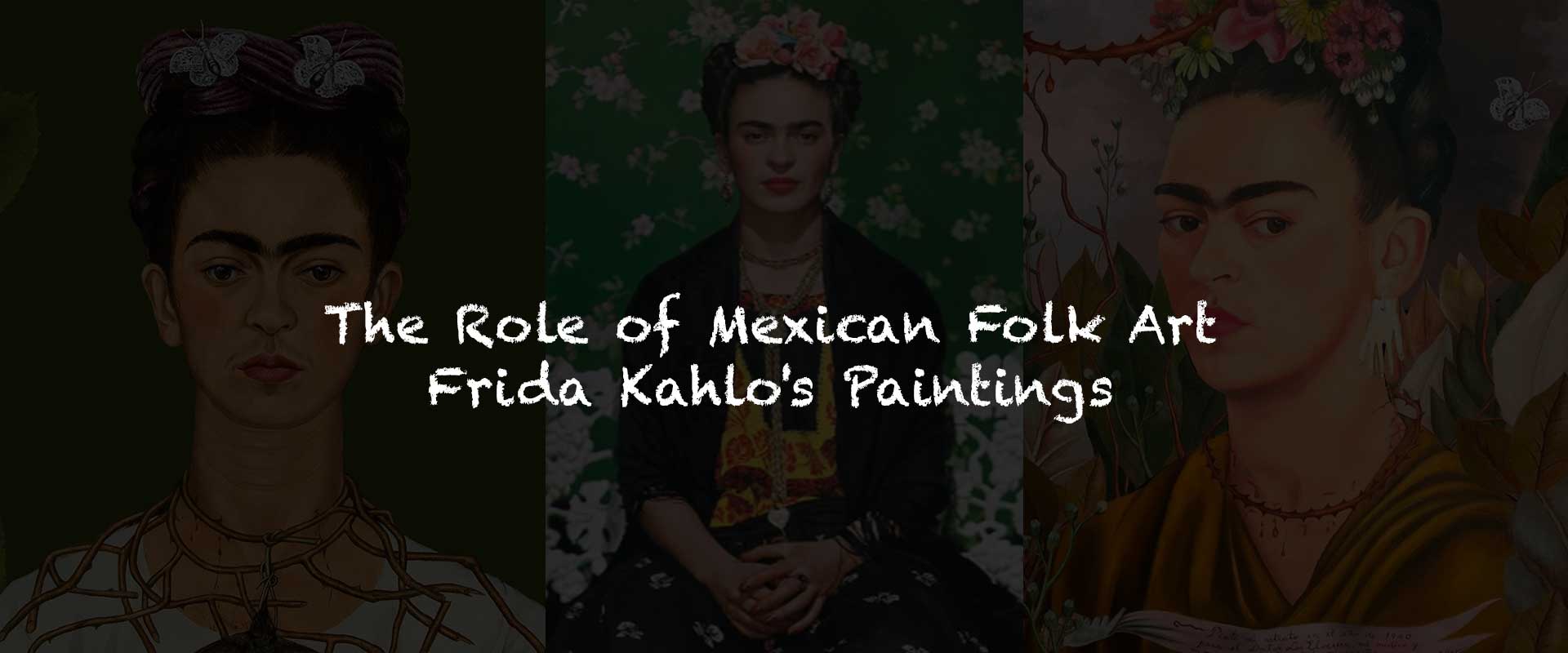Frida Kahlo’s paintings are instantly recognizable not only for their emotional intensity but also for their deep connection to Mexican folk art. She absorbed the colors, symbols, and storytelling traditions of her culture, transforming them into fine art that was unapologetically personal yet universally resonant. Whether you are studying her work in museums or browsing curated selections like the Frida Kahlo Wall Art Prints, her folk art influences are impossible to miss. Her cultural references also play a significant role in shaping her identity, a theme explored further in Frida Kahlo’s Fashion Legacy: Traditional Dress as Political Statement.
Mexican Folk Art: A Cultural Overview
Mexican folk art blends indigenous and Spanish colonial traditions, emphasizing handcrafted detail and symbolic imagery. It often includes:
- Textiles with embroidered floral and geometric designs
- Ceramics painted with bold, repetitive patterns
- Ex-votos—devotional paintings expressing gratitude or telling miraculous stories
- Papel picado and wood carvings that celebrate festivals and community events
This visual language values storytelling as much as decoration, making it an ideal framework for Kahlo’s autobiographical approach.
Folk Art Elements in Kahlo’s Paintings
| Folk Art Element | Description | Example in Kahlo’s Work |
|---|---|---|
| Ex-Voto Style | Narrative, flat-perspective devotional art | Henry Ford Hospital (1932) |
| Religious Iconography | Saints, sacred hearts, and martyr symbols | The Little Deer (1946) |
| Indigenous Motifs | Aztec imagery, pre-Columbian patterns | Self-Portrait on the Borderline (1932) |
| Folk Embroidery Patterns | Traditional floral and geometric stitches | The Two Fridas (1939) |
| Vibrant Color Palette | Bright reds, greens, blues, and yellows | Seen across her self-portraits |
Folk Art as a Visual Language
Kahlo often adopted folk art’s flat perspective, bold outlines, and symbolic density. These elements allowed her to communicate personal stories in a direct, emotionally charged way. By using the same accessible visual cues as community-based folk art, she connected with viewers on both a personal and cultural level.
Clothing as Cultural Symbolism
Her Tehuana dresses, floral headpieces, and indigenous jewelry were more than aesthetic choices—they were political statements. They:
- Asserted her pride in Mexican heritage
- Rejected European-influenced fashion
- Made her image part of her artistic identity
In The Two Fridas, the detailed embroidery mirrors the craft traditions of folk artisans, grounding the portrait in cultural authenticity.
Religious and Spiritual Motifs
Kahlo used imagery from Mexican devotional art to express suffering and resilience. These included:
- Sacred hearts to represent love and endurance
- Thorn crowns for sacrifice and struggle
- Saint-like poses that merge Catholic and indigenous beliefs
Such symbols transformed her personal experiences into stories with universal emotional resonance.
Nature and Animal Symbolism
Animals in her work often act as protectors, companions, or stand-ins for her own emotional state. Examples include monkeys for playfulness, parrots for vibrancy, and deer for vulnerability, as in The Little Deer. These choices reflect folk traditions where animals hold spiritual significance.
Folk Art Colors and Composition
Her palette—reds for passion, blues for melancholy, greens for vitality—echoed the bold contrasts of traditional Mexican crafts. Many of her compositions are symmetrical, similar to the structure of retablos, giving her narratives a sense of stability even when depicting chaos.
Political Identity Through Folk Art
Post-revolutionary Mexico embraced folk art as a symbol of national pride. Kahlo’s commitment to these traditions visually aligned her with cultural nationalism. This celebration of heritage parallels the ethos found in Artists, where visual identity is deeply rooted in tradition.
Conclusion
The role of Mexican folk art in Frida Kahlo’s paintings is central to understanding her work. Through ex-voto storytelling, indigenous motifs, religious symbols, and bold colors, she fused personal narrative with national identity. By embedding folk traditions into her visual language, Kahlo ensured her art would stand as both a deeply personal testament and a cultural legacy.





